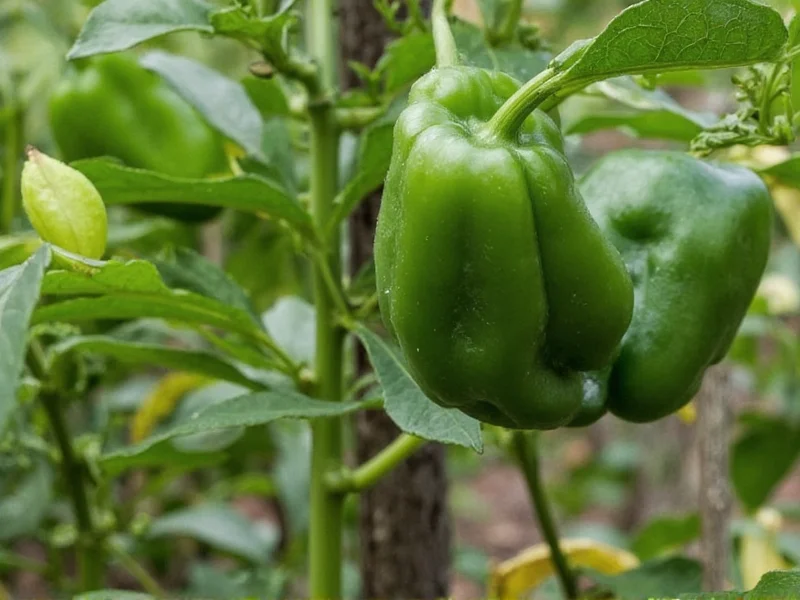Understanding exactly how hot are poblano peppers requires examining their position on the Scoville scale, the standard measurement for chili pepper heat. These versatile Mexican peppers offer a gentle warmth that enhances dishes without overwhelming them, making them ideal for those who prefer milder spice profiles while still wanting some flavor complexity.
Decoding Poblano Pepper Heat
When evaluating how hot are poblano peppers in practical terms, it's essential to understand what their 1,000-2,000 SHU rating means for your palate. This mild heat level delivers a subtle warmth rather than intense burning sensation. Most people describe the experience as a gentle tingle at the back of the throat that dissipates quickly, unlike hotter peppers that create prolonged burning.
The poblano's heat is often overshadowed by its rich, earthy flavor with notes of tobacco and raisin, particularly when roasted. This flavor complexity explains why they're so popular in traditional Mexican dishes like chiles rellenos and mole poblano, where their mild heat complements rather than dominates other ingredients.
Comparing Poblano Heat to Other Common Peppers
| Pepper Variety | Scoville Heat Units (SHU) | Heat Level | Comparison to Poblano |
|---|---|---|---|
| Bell Pepper | 0 | Mild | 0-1x milder than poblano |
| Poblano | 1,000-2,000 | Mild-Medium | Baseline |
| Guajillo | 2,500-5,000 | Medium | 1.5-2.5x hotter than poblano |
| Jalapeño | 2,500-8,000 | Medium | 2-4x hotter than poblano |
| Serrano | 10,000-23,000 | Medium-Hot | 5-12x hotter than poblano |
| Habanero | 100,000-350,000 | Very Hot | 50-175x hotter than poblano |
Factors That Influence Poblano Pepper Heat
Understanding why is my poblano pepper so hot requires examining several variables that affect heat levels:
- Maturity: As poblano peppers ripen and turn from dark green to reddish-brown (when dried, they become ancho peppers), their heat level slightly increases
- Growing conditions: Stress factors like inconsistent watering or extreme temperatures can cause peppers to produce more capsaicin
- Individual variation: Even within the same plant, heat levels can vary between peppers
- Seed and membrane concentration: The white ribs and seeds contain most of the capsaicin—the compound responsible for heat
When exploring how hot are poblano peppers compared to jalapeno, remember that a typical jalapeño starts where the hottest poblano ends. This significant difference explains why poblanos work well in dishes where you want subtle warmth without overwhelming spice.
Culinary Applications of Mildly Spicy Poblanos
The moderate heat level of poblano peppers makes them exceptionally versatile in cooking. Chefs appreciate how they add dimension without dominating other flavors. When preparing stuffed poblano peppers (chiles rellenos), their mild heat allows fillings like cheese or picadillo to shine through.
For those wondering are poblano peppers spicy enough for authentic Mexican cuisine, the answer is yes—they're fundamental to many traditional recipes precisely because of their balanced heat. Roasting poblano peppers enhances their natural sweetness while mellowing any heat, creating that characteristic flavor profile essential to dishes like rajas con crema.
Common Misconceptions About Poblano Heat
Several myths persist about poblano pepper heat level. Many people mistakenly believe all green peppers are mild, but this isn't true—some green varieties like serranos pack significant heat. Others assume dried peppers are always hotter than fresh, but when poblano peppers dry to become anchos, their heat actually decreases slightly while their flavor deepens.
Another frequent question is poblano vs bell pepper heat—while both are considered mild, poblanos do have noticeable heat compared to completely heat-free bell peppers. This subtle warmth makes poblanos ideal for introducing children or spice-sensitive individuals to chili peppers.
Handling Poblano Peppers Safely
Even with their mild heat rating, proper handling prevents accidental spice transfer. Always wash hands thoroughly after handling, especially before touching your face. For those particularly sensitive to capsaicin, wearing gloves while preparing peppers provides extra protection. Removing the seeds and white membranes significantly reduces heat if you're preparing mild spicy peppers for cooking for sensitive palates.











 浙公网安备
33010002000092号
浙公网安备
33010002000092号 浙B2-20120091-4
浙B2-20120091-4